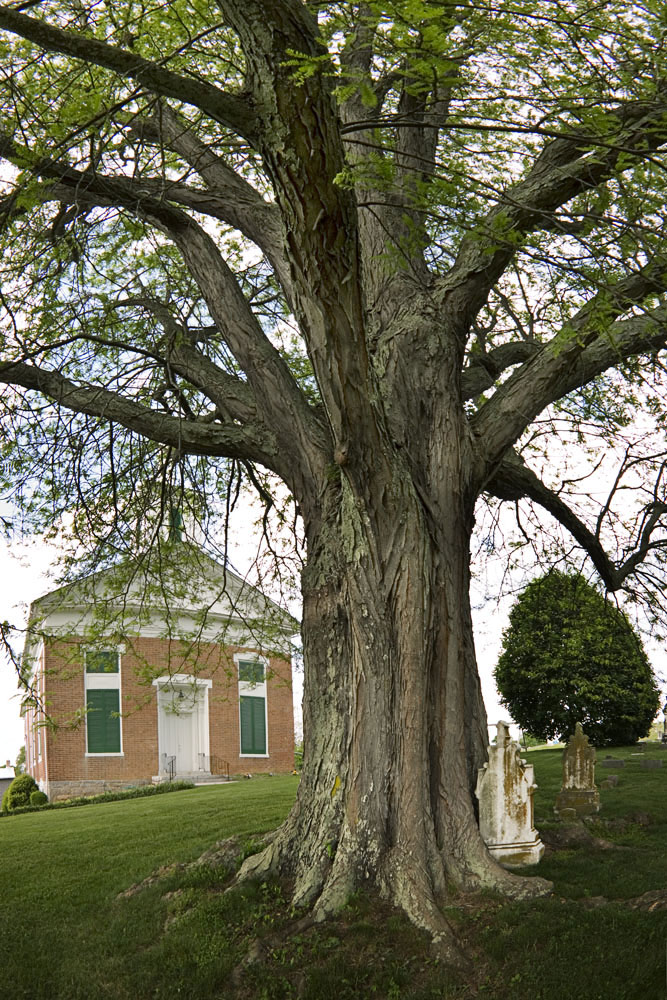Virginia ranks fourth on nation's big tree list

Virginia ranks fourth among the states for having the most big tree species with 76 national champion trees, according to American Forests’ recently released 2011 National Register of Big Trees.
Many of the state’s champions are showcased in “Remarkable Trees of Virginia,” authored by Virginia Tech forestry professor emeritus Jeff Kirwan and Nancy Ross Hugo of Richmond, with photos by Robert Llewellyn of Charlottesville.
Among Virginia’s champions are a honeylocust in Fincastle (one of 16 trees new to this year’s list), a water tupelo in Greensville (the largest of the state’s champion trees), a Stewartia in Chesapeake (the state’s smallest champ at 15 feet), a hornbeam in Berryville, and a round leaf birch in Smyth County. The national register lists the largest tree in the country from over 660 species.
“Two-thirds of champion trees are found in institutional settings — cemeteries, churches, universities — where they grow large without competition and crowding from other trees,” said Kirwan, who continues doing special projects for Virginia Tech’s College of Natural Resources and Environment.
Kirwan’s years researching trees in Virginia as part of the state’s Big Tree Program prompted him to write his book. A decade ago, the Virginia Urban Forest Council, known as Trees Virginia, turned the state’s big tree registry over to him and the College of Natural Resources and Environment. Eric Wiseman, associate professor of urban forestry in the college, helps oversee the registry with the help of undergraduate students and support from Trees Virginia.
The mission of Trees Virginia, a nonprofit organization established in 1990, is to enhance the quality of life through stewardship of the commonwealth’s urban and community trees. Trees Virginia promotes an awareness of community forests and the value of trees.
This year Virginia ranks fourth in the national register after Florida, Texas, and Arizona. A total of 751 champion trees across America were recognized, 96 new champions were named, and 108 previous champions were dethroned. “There are several reasons why trees lose their champion status,” explained Wiseman. “Some trees die, some get displaced by land development, and sometimes tree hunters simply find a larger tree. Aging champs are part of this big-tree game because they reach the end of their lives, yielding the crown to big trees that are younger.”
Volunteers nationwide search for and nominate specific trees for the National Register of Big Trees, which is updated each year. Kirwan has worked with Byron Carmean and Gary Williamson in the Tidewater-area of Virginia, calling them “the greatest of all big-tree hunters” for nominating 42 national champions, far ahead of the 16 nominated by runner-up Andy Sawyer of Michigan.
Carmean, a retired high school teacher, and Williamson, a park ranger, have been on the prowl for big trees in Virginia and North Carolina since 1983. Their finds range from a 14-foot-tall winterberry tree to the state champion water tupelo with a trunk measuring 39 ½ feet in circumference. “I really, really like trees,” said Carmean. “I love the hunt involved in finding and identifying them.”
A tree’s size is based on a formula that includes the size of its trunk (measured 4 ½ feet above the ground), its height, and the average spread of its crown, or upper branches.
In addition to its leadership regarding the state’s Big Tree Program, Virginia Tech has also enhanced its own tree stewardship and legacy. For the past three years, the university has had the rare honor of receiving Tree Campus USA recognition by the Arbor Day Foundation for its dedication to campus forestry management and environmental stewardship. Wiseman helped develop the university’s Campus Tree Care Plan.
For a list of Virginia’s national champion trees, visit the Virginia Big Tree Database and search to show only national champs.








